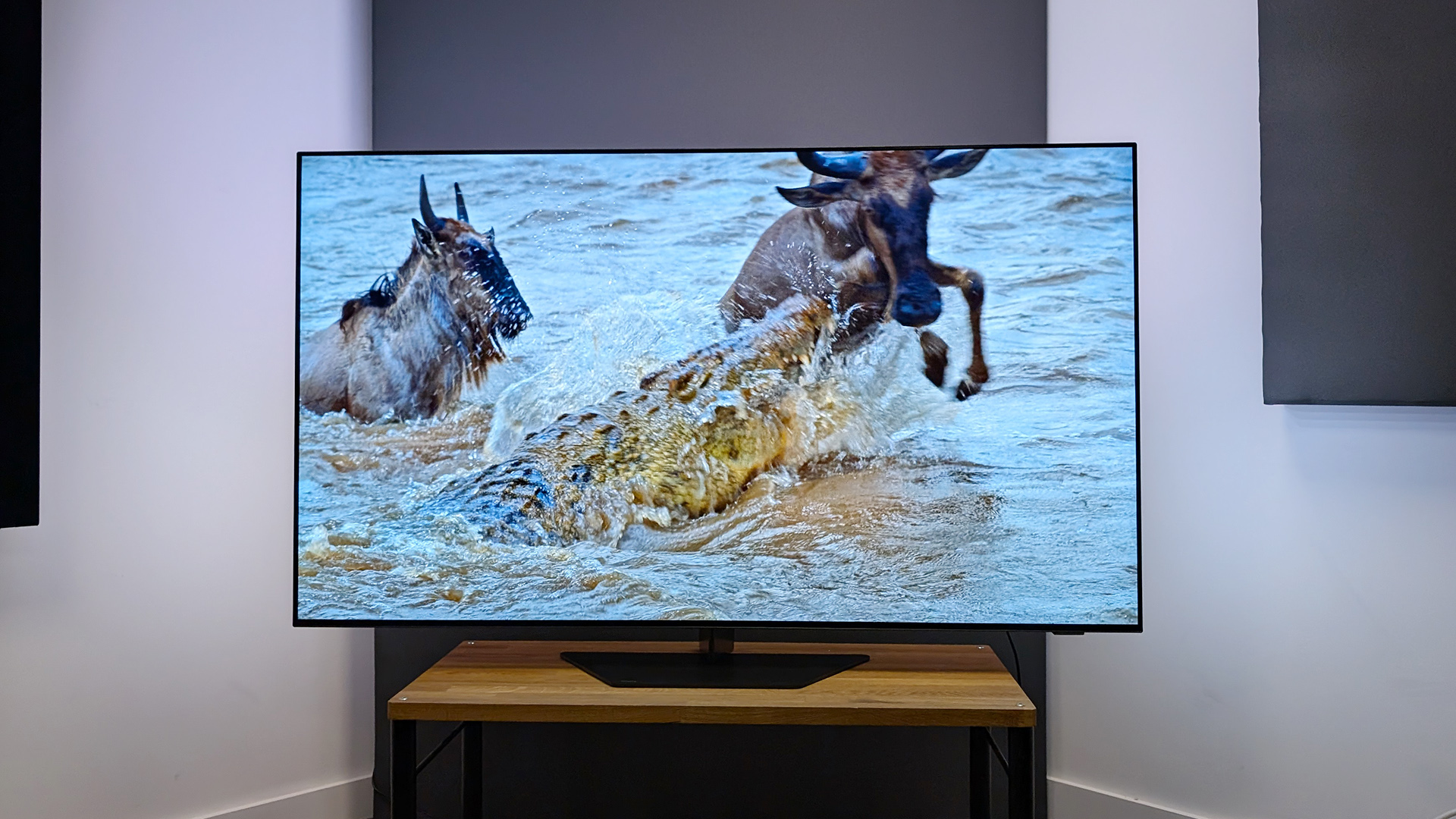
The Philips OLED809 is the second cheapest option in the company's top-end line of TVs.
Why’s that a big deal? Because it makes the OLED809 a direct rival to the LG C4, which proved to be one of the best OLED TVs to arrive this year, when we reviewed it in April.
Which may lead you to wonder, why should you consider the Philips OLED809 over its established rival? Thankfully having thoroughly put it through its paces, we can confirm it is a very solid TV that proves there is life in regular OLED yet.
Make no mistake if you don’t care about getting next generation Micro Lens Array or QD-OLED screen tech that’s all the rage at the top end of the market, then the OLED809 is well worth considering.
Price

The Philips OLED809 is the third and cheapest option in the brand’s current OLED lineup, sitting below the more expensive Philips OLED909 and OLED959.
It’s also only available in specific retailers, where prices are already beginning to fluctuate. But, in the UK its price is generally close to its archrival, the LG C4.
The 65-inch Philips OLED809 we’re testing here is officially priced at £2099, though we have already seen it available for less. The slightly smaller 55-inch model retails for a more modest £1599, while the largest 77-inch option goes for £3499.
The only slight oddity is that the 42-inch and 48-inch Philips OLED809 both cost £1399. We’ve asked Philips why the two sizes cost the same, though it’s likely due to smaller OLEDs being harder and more expensive to make.
By comparison, the 65-inch LG C4 is retailing for a slightly more premium £2250. As a slight spanner in the works, the older, What Hi-Fi? Award-winning 65-inch Sony A80L is also currently slightly cheaper, retailing for £1899 – though this is about to be superseded by the newer Sony Bravia 8, so that’s not massively surprising.
Like all Philips TVs, the OLED809 isn’t available in the US, so we apologise in advance for the lack of dollar pricing.
Design
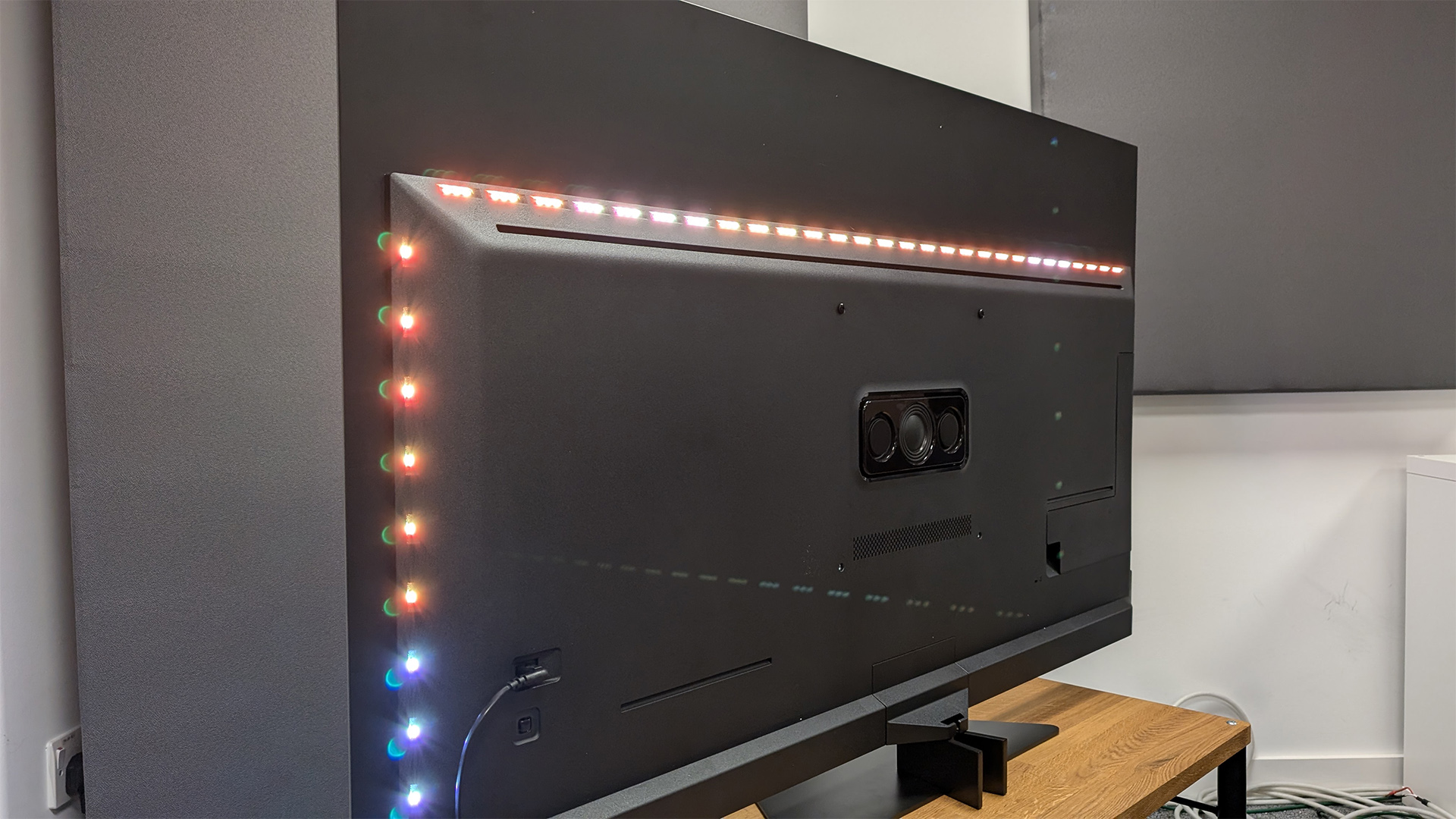
The 809 doesn’t rock the boat with its design. The TV looks a lot like the previous generation Philips OLED808, which itself wasn’t a huge deviation from the even older Philips OLED807.
This isn’t a bad thing for the most part. The OLED808 features a pedestal stand that neatly attaches to the TV’s back with four included screws.
Like the OLED808 it also has a swivel mechanism. This is a really positive addition we wish more TVs had, as the ability to quickly adjust the screen’s orientation makes it significantly easier to access the set’s ports on the fly.
Unlike the OLED959 and OLED909, the OLED 809 doesn’t have a speaker bar attached to its bottom. Instead it has a discreet 2.1 channel set-up, with an integrated 70W subwoofer sitting on its back.
This, plus the fact the base is flat, rather than having an angled orientation makes it easy to neatly place a regular sized soundbar under the OLED809.
The remote is also excellent. It is built of robust feeling metal, and features full backlighting, making it easy to use, even in pitch black movie watching conditions.
We honestly wish every TV remote had this feature and can’t fathom why so many companies still seem to give little thought to remote control designs and add backlighting – we’re looking at you LG.
Features
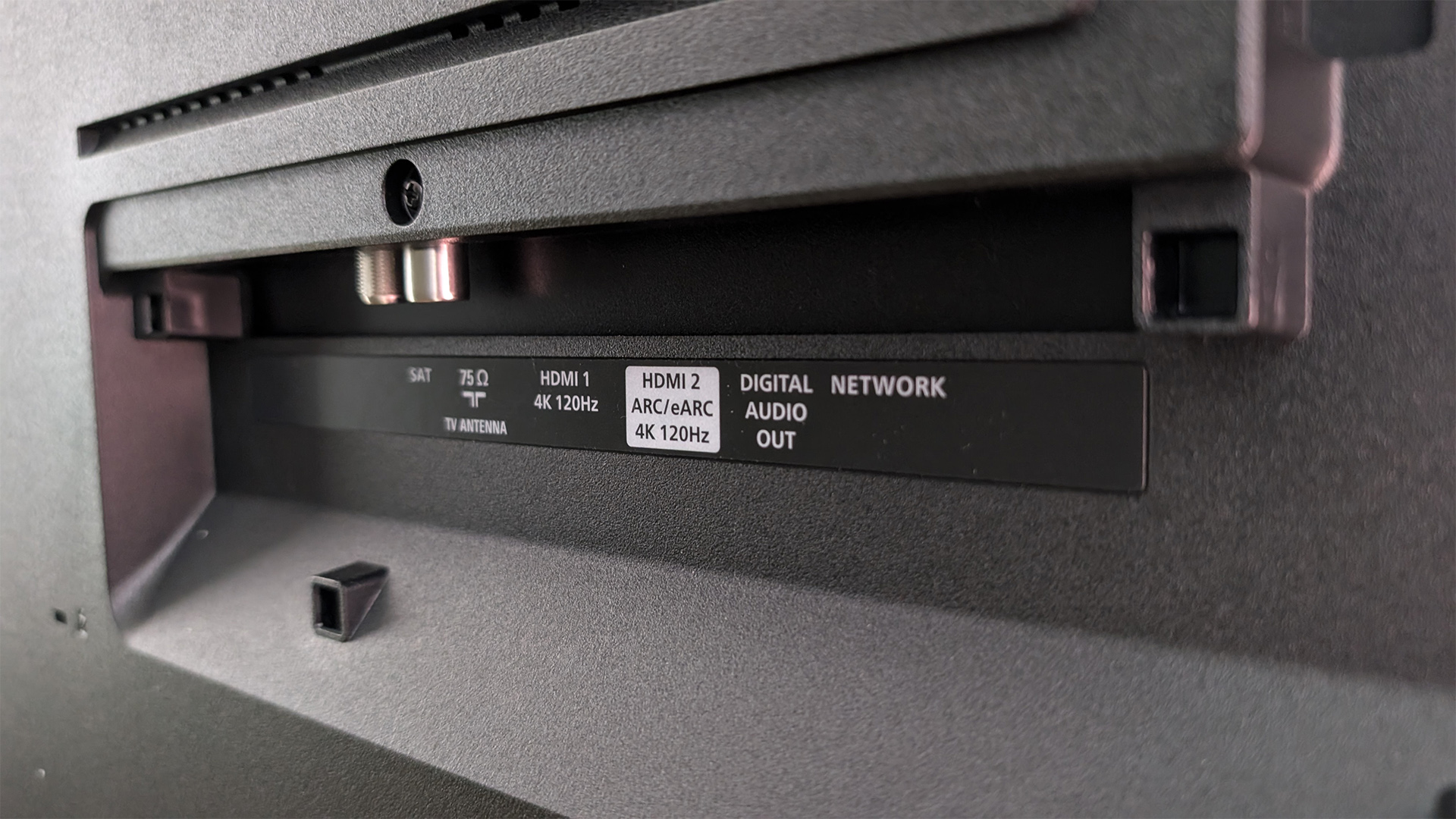
If you look round the back of the Philips OLED809, you’ll spot its most unique feature – Ambilight. This is a bias lighting feature unique to Philips and a key differentiator you won’t find on competing OLEDs including the LG C4 and Sony A80L.
The version on show here is the three-sided variant. This is a less refined set-up than the top end new Ambilight Plus tech seen on the Philips OLED959 and four-sided set-up seen on the OLED909. Whether that is a big deal remains to be seen as we haven’t had the OLED959 or OLED909 in for testing.
That aside, every version has the same goal: to reduce eye strain when watching TV and make the screen feel larger and more immersive by matching the ambient conditions the set is playing in with what’s being shown on screen. For example, if you’re watching football, Ambilight will show hues of green, reflecting the colour of the pitch.
Philips has also made some improvements to the three-sided version of Ambilight seen here, compared to last year’s OLED808. First, Philips claims the inclusion of new lenses in the LEDs will let sets with Ambilight Plus offer a wider halo of higher resolution colours.
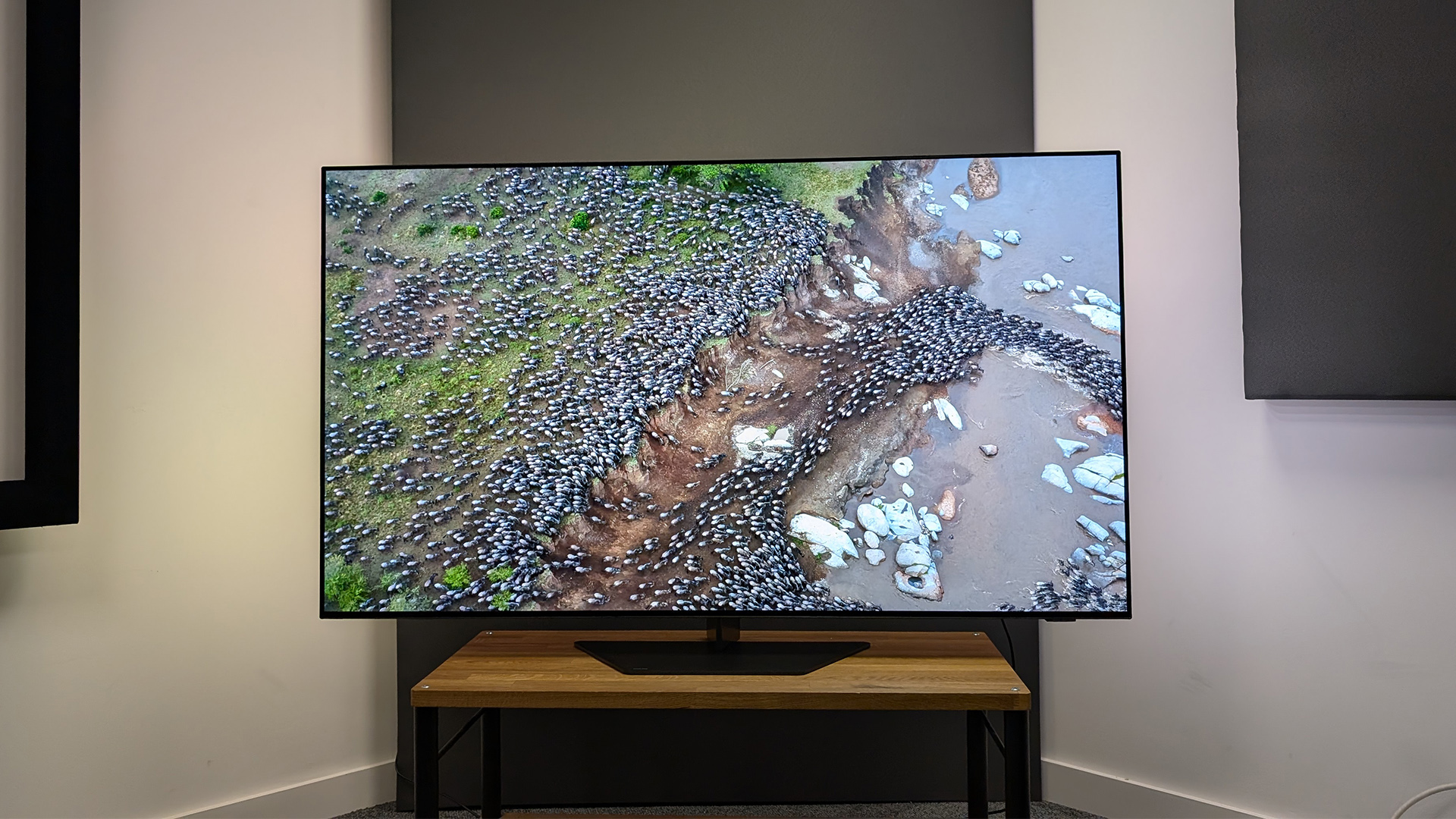
Screen size 65-inches (also available in 42-, 48-, 55- and 77-inches
Type OLED
Backlight N/A
Resolution 4K
HDR formats HLG, HDR10, HDR10+, Dolby Vision
Operating system Google TV
HDMI inputs x 4 (2 x 48Gbps HDMI 2.1)
Gaming features 4K/144Hz, VRR, ALLM, Dolby Vision gaming
ARC/eARC eARC
Optical output? Yes
Dimensions (hwd, without stand) 70 x 122 x 11.3cm
Second, there’s a new “Ambilight Intelligence V3” feature. This is a new addition powered by the OLED809’s 8th Gen P5 AI processor, which is a step up on the 7th Gen P5 AI processor seen in the older model.
It uses the new chip’s improved processing prowess to try and intelligently optimise Ambilight’s settings and output based on ambient light levels to improve HDR performance, even when watching TV in very bright conditions.
The idea of watching well-made HDR content in bright conditions will likely not appeal to some cinephiles, who do any serious watching in the dark. Ambilight itself remains a Marmite feature in general, even among the What Hi-Fi? team for this reason – with some of our testers finding the feature distracting and an unnecessary source of light pollution. Others love it, however.
Regardless of our overall feelings, our reviewers agree the version on show on the OLED809 will delight Ambilight fans. The system delivers a wonderful bloom of colours, and matches ambient conditions well and in a suitably reactive fashion to deliver the intended effect.
This means that if you are already a fan of Ambilight, it remains a key selling point for the OLED809. We also wouldn’t disregard the set, even if you don’t want to use Ambilight, as you can quickly turn it off using a dedicated button on the TV’s remote.
HDR support is solid, with the OLED809 working with HDR10+ Adaptive and Dolby Vision. For the more hardcore there’s also CalMAN calibration, an IMAX Enhanced preset and Filmmaker modes. These make it one of the most flexible sets in its price bracket for HDR-standard support and specialist film settings. Though as ever, we only recommend true experts try and properly calibrate their TV, even with the CalMAN mode.
The TV's gaming powers are also generally competitive with rival sets. There’s the same GameBar quick settings menu which is a bonus for next generation gamers who want to adjust the TV’s options on the fly. Like many of 2024’s step down OLEDs, Philips has also raised the OLED809’s max refresh rate to 144Hz, which means it can render games even faster when a very powerful PC is connected. Until this year many TVs had a 120Hz max refresh rate.
Alongside this there’s Dolby Vision Game, VRR, ALLM, HGiG, FreeSync Premium and G-Sync support, which means it has all the bells and whistles you need to run a PS5 or Xbox Series X/S at full speed.
Interestingly, it also supports DTS Play-Fi. This is a rival to Dolby’s soon to be launched Flexconnect technology, which aims to make it quick and easy to create wireless surround-sound systems using compatible hardware. We haven’t had a chance to test any Play-Fi speakers yet, but Philips’ early support is interesting.
There are a couple of compromises however. First, like pretty much every OLED that’s not made by LG or Samsung, the Philips only has two HDMI 2.1 inputs, one of which doubles as an eARC connection. This means that if you have a Dolby Atmos soundbar and two current generation games consoles and want to take advantage of all their features, you will have to contend with a fair amount of cable swapping.
Second, the use of Google TV OS means that the set doesn’t have quite as good an app selection as rivals. In the UK there’s no BBC iPlayer, ITVX or Channel 4 app, for example. This isn’t a complete deal breaker if you don’t use these catchup services very often, as it otherwise has all the staples we’d expect, including Netflix, Disney Plus, Amazon Prime Video and Apple TV.
Picture
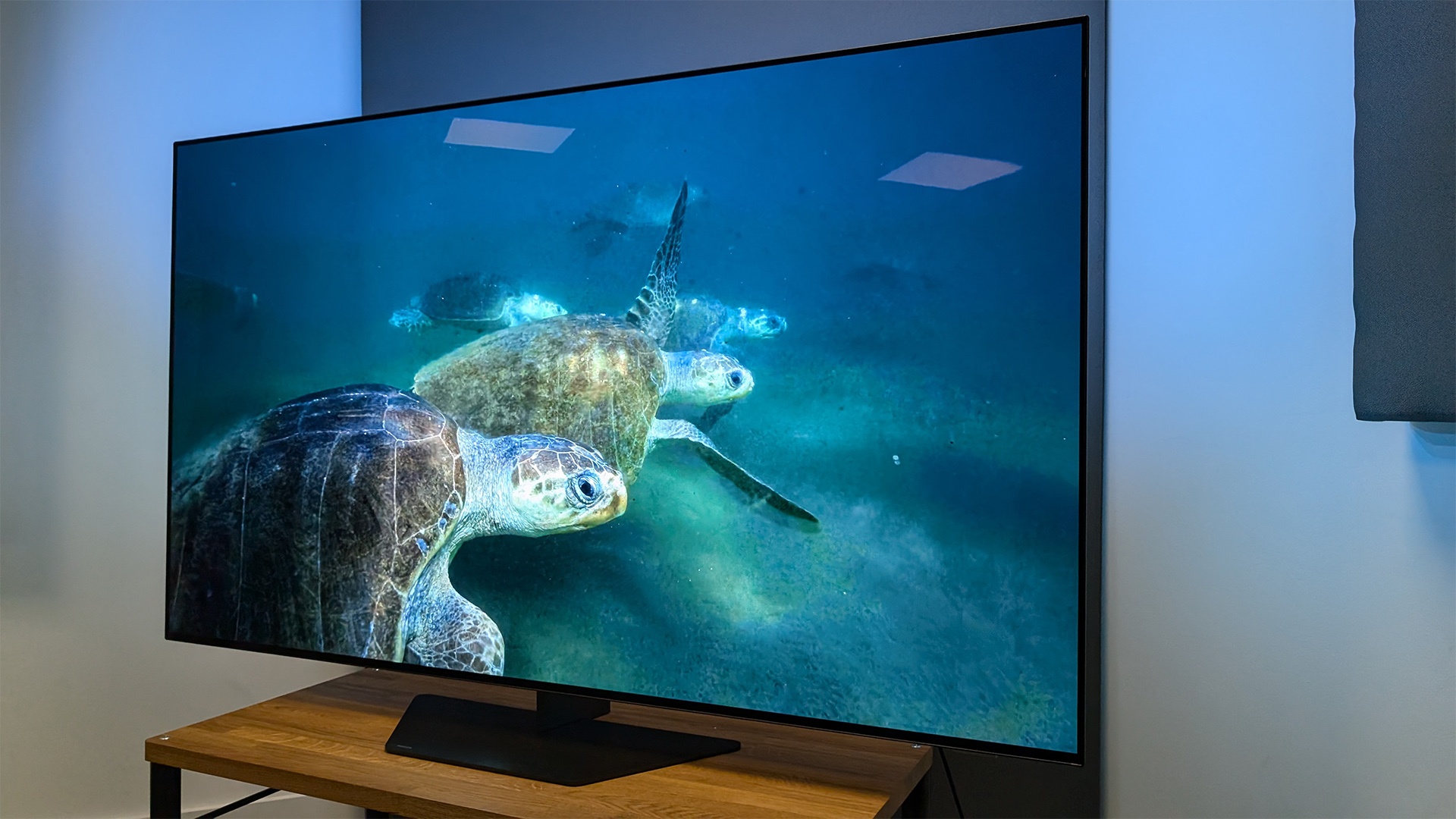
The OLED809 features LG Display’s current generation OLED EX panel. Like all the step down OLED TVs we’ve seen this year it doesn’t feature brightness boosting Micro Lens Array (MLA) tech, which is once again limited to flagship models – in Philips’ case the OLED909 and OLED959+.
Despite this, Philips has made some bold claims about raising the OLED809’s max peak brightness level up to 1300 nits. That may not be close to the 3000 nits figure seen on MLA sets this year, but considering regular OLED sets struggled to go beyond 700 nits even a few years ago it is still a marked improvement.
But does it deliver results in the real world? Based on our testing, the answer is that it depends on the specific settings you use. Philips makes no secret about wanting its OLED TVs to deliver a “blow your socks off” home cinema experience. In the past this has meant it has gone for impact over realism in some instances.
The OLED809 continues this trend for the most part, especially if you stick to its out-of-the-box settings. The TV’s native preset pushes brightness levels as far as it can, and cranks the colour temperatures, which makes the picture eye-catching, but also noticeably unnatural in many instances. This isn’t helped by the fact that its native motion processing is very heavy handed. Being fair to Philips, this is true of most of the sets we test, but it's particularly noticeable on the OLED809.
Thankfully, if you take the time and tweak its picture settings, the results rapidly improve and the OLED809 can deliver an excellent home cinema experience, even for people who value “as the director intended” authenticity over in-your-face impact.
Playing the opening and second scenes of Top Gun: Maverick the OLED809 delivers wonderfully natural skin tones, with a richness and warmth that oozes authenticity. This continues with ocean views where the reflections on the water sparkle and are complemented by a skyline full of an authentic, wide range of colours that make for a captivating viewing experience. The test is a great showcase for quite how wide and vibrant a colour palette the OLED809 can display.
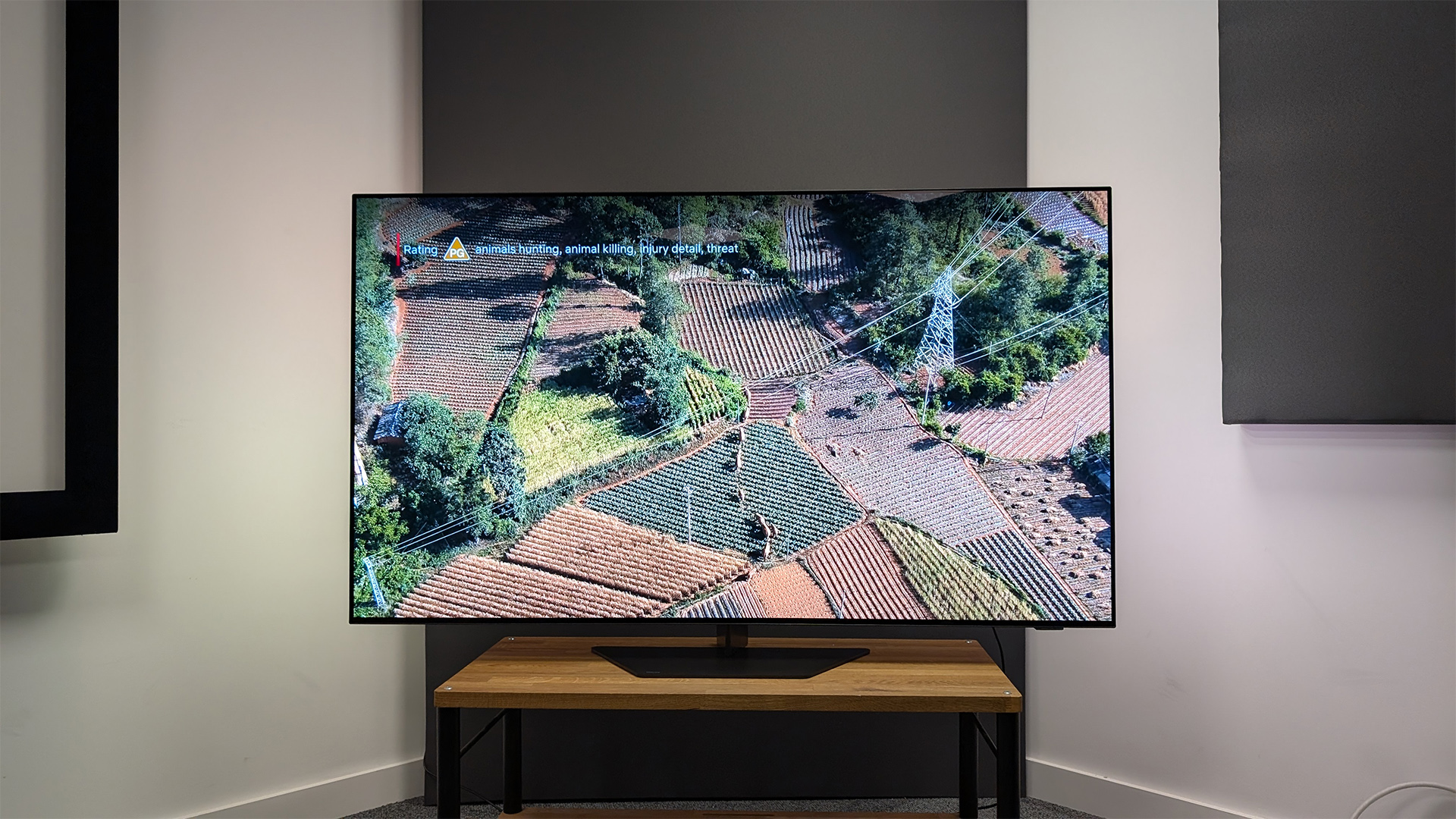
Motion processing, once tempered, also yields significant improvements. As Maverick speeds across the desert landscape on his bike, the movements are smooth, but natural and free of artefacts, which are a common issue on many OLED TVs including the Samsung S95D.
Dune is equally impressive, with the OLED809 throwing up wonderful levels of detail and realism as the camera pans over the planet’s scorched desert landscape.
Moving to Pan, our standard test disc for seeing how a TV handles incredibly bright scenes due to its atypical 4000 nits mastering, the OLED809’s performance during bright scenes continues to impress.
As a flying pirate ship sails into the distance the skyline is wonderfully vibrant, with the sun remaining full of detail and a wide range of colours lost on most of the many traditional OLEDs we test. The same area on the Sony A80L loses the details, with the sun displaying as pure white.
Make no mistake, during bright scenes the levels of detail, colour accuracy and range the OLED809 offers match if not beat the best OLEDs we’ve tested at this price.
But it’s not altogether perfect and things take a turn when we move to darker movies. Playing the opening scene of Blade Runner 2049 the OLED809 delivers good but not best in class shadow detail and depth for a TV in its weight class.
In isolation the image is immersive, but there’s less contrast and heft, especially compared to the Sony A80L which delivers more dynamic and higher levels of detail during the incredibly dark scene. The skin tones across Dave Bautista’s skin look good, but the picture offers less contrast, especially between the darkest to lightest parts of his face than the A80L.
This is typical of the OLED809’s general performance in dark scenes, where in comparison the A80L’s increased shadow detail leads to more contrast and a greater sense of depth in dark scenes as a result.
The Batman tells a similar story. As the caped crusader chases down a criminal in the Batmobile the flames and city lights in the scene look wonderful with a beautiful hue of colours in their brightest areas – but again there’s not quite as much shadow detail as the best in the business. The OLED809’s colour accuracy veers off here as well, with the darkest parts of Batman’s armour taking on a slightly brownish, paler tone.
This makes the Philips OLED809 an interesting performer that offers near best in class performance at this price in many instances, especially bright scenes, but then falls behind in darker ones.
Upscaling is good, but also not perfect. Playing True Grit, a famously difficult SDR test disc due to the movie’s gritty dark, grainy nature, the picture remains watchable, but we experience noticeable black crush.
Sound
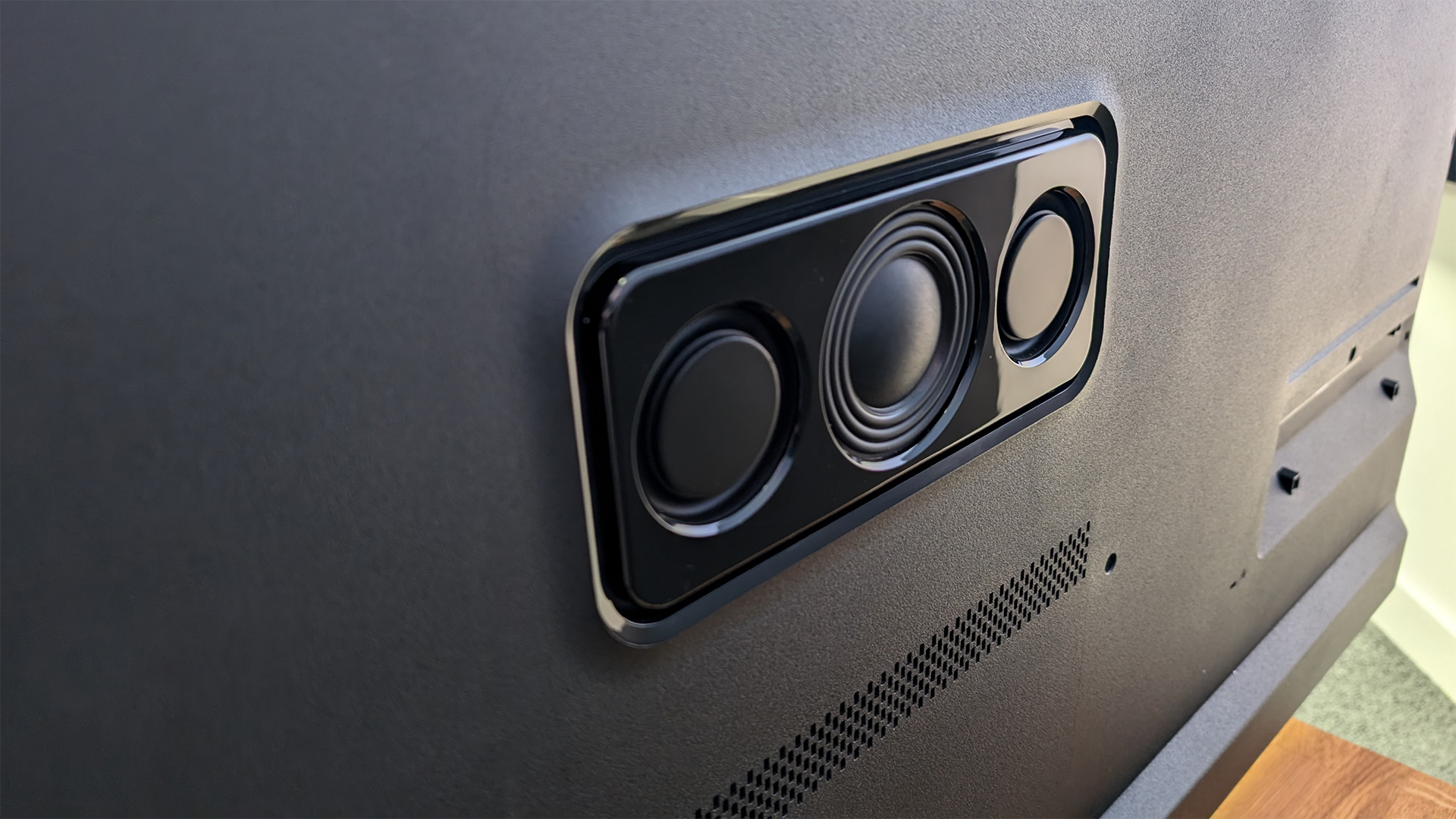
The OLED809’s sound system combines two-way left- and right-channel speakers with a rear-facing triple ring bass driver reinforced by four passive radiators.
As inbuilt TV speaker set-ups go, it is a capable performer, once you take advantage of its room calibration service and switch it to the AI, rather than standard, sound setting. Like most TV, the standard setting is particularly flat and lacks the space to do any good movie justice.
Low level heft is the most immediate differentiator between the OLED809 and rivals, including the Sony A80L. The second scene of Blade Runner 2049’s incredibly demanding soundtrack, sees the Philips set deliver a surprisingly controlled performance, while still offering enough impact to make the scene exciting. This is impressive as the scene is challenging, with most TVs' speakers either presenting too thin a sound or suffering from distortion, including more expensive sets such as the LG G4.
A difficult scene in Dune, where buzzing flying machines zoom over the desert with a high intensity, thumping drum soundtrack accompanying it, shows similar results. The speakers offer a safe, neutral performance where each part of the frequency range is suitably represented for basic, casual movie watching.
Impressive enough by TV speaker standards, but be warned it is still not as immersive or deep as the sound you’ll get on even an entry-level soundbar, such as the Sonos Beam Gen 2.
There are also some caveats. Like the LG C4, and most OLEDs this price, it doesn’t have upward firing speakers. So surround sound, let alone Dolby Atmos performance, is limited. During Dune there’s little sense of direction, with the sound remaining firmly located at the TV’s centre. The A80L’s speakers meanwhile give a much greater sense of space and direction, with there being a noticeably better-placed 'zoom' as the machines fly overhead.
Dialogue also lacks the separation needed to make for a truly immersive experience, with the characters' voices lacking the space and directionality you’ll find on even moderately priced soundbars. This is especially noticeable during a conversation in Blade Runner 2049 where a character chats to a dishevelled hologram. Here the hologram's disembodied voice should float around the room, matching her location around the apartment. Instead it all falls to the TV’s centre.
People who like to keep their neighbours up should also be warned, like many sets, the OLED809 rapidly loses its composure when running near its max volume.
This is a common problem on all TV speakers though, and the Philips’ performance is safe but above average by inbuilt speaker standards. But our advice remains, budget for a soundbar or sound system on top of your new TV if you want the best experience possible.
Verdict
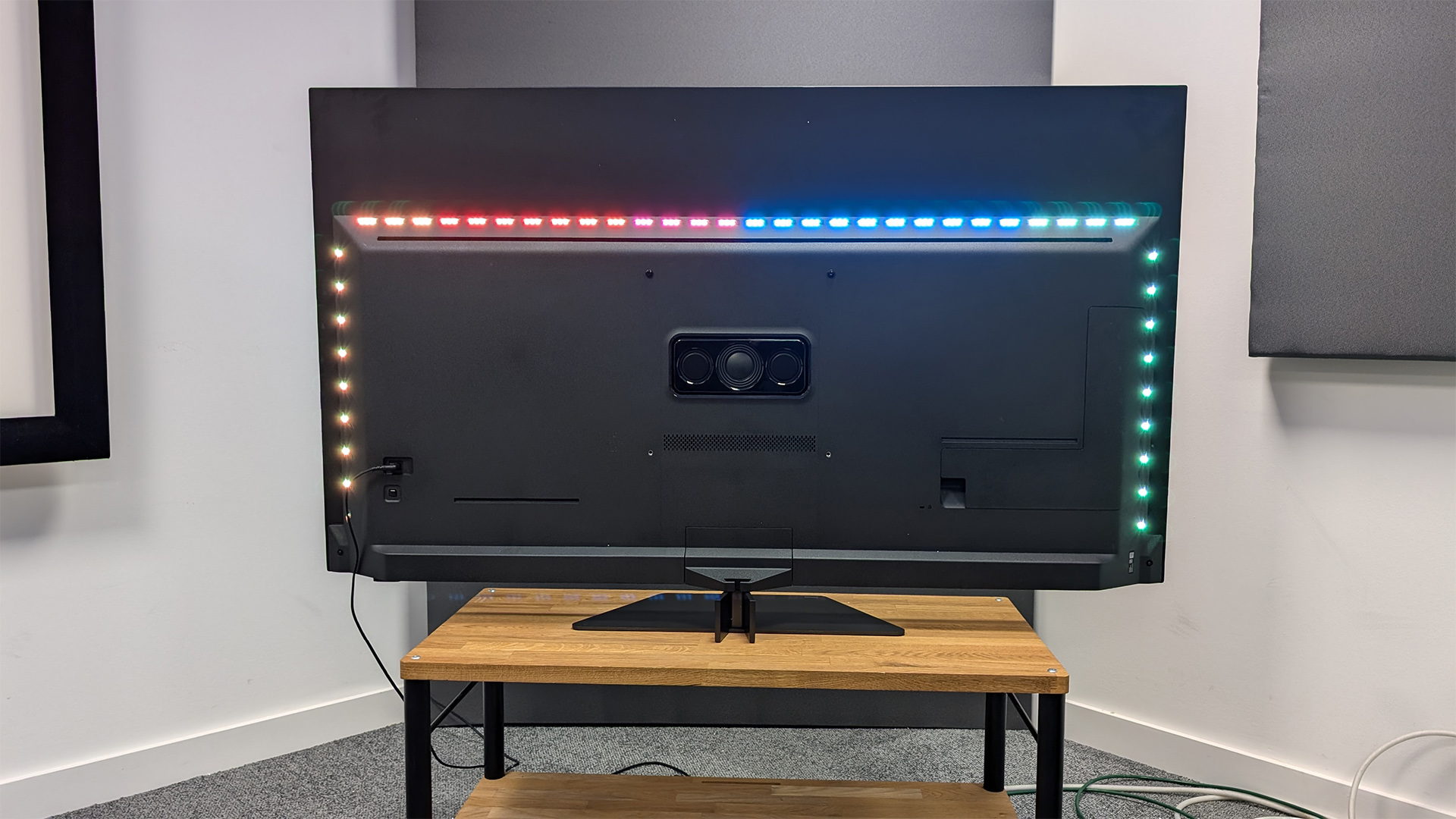
The Philips OLED809 is in many ways a fantastic TV. Philips has designed it with an overt focus on helping it deliver exceptional results in regular home viewing conditions, as well as the pitch-black environment favoured by cinephiles.
Though it retains Philips’ “blow your socks off” goal, once you tone down its out-of-the-box picture settings the TV gives great results, particularly during bright scenes. Here it delivers a wonderfully wide colour palette and brilliantly high max brightness, which leads to a truly immersive viewing experience.
The only downside is that it isn’t quite as impressive during particularly dark scenes, where its colour accuracy and detail level start to waver and don’t quite match the experience you get on some rivals.
But thanks to its capable audio and solid suite of gaming features, this is forgivable and makes the set one well worth considering for any TV buyer looking for an OLED that won’t break the bank.
SCORES
- Picture 5
- Sound 4
- Features 4
MORE:
Read our review of the Sony A80L
Also consider the LG C4
Read our Panasonic MZ1500 review
Best TVs: flagship OLEDs and affordable flatscreens tried and tested







